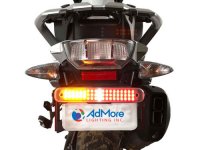I have had my 2017 F3L for 2-1/2 years now (15,000 miles), and have consistently manually down-shifted (engine-braked) since the very beginning. An old habit left over from standard-shift sports car driving. My instincts (sound and feel) have always 'urged' me to manually down shift somewhat in advance of what the Spyder's computer brain tells it to do. In that regard, I agree with Spyder_Cowgirl and others here - I want (to feel) the 'live' engine underneath me, always well within the power band.
Whether we manually down shift early, or wait and let the computer do it automatically, doesn't add anything to the number of actual gear changes - both procedures go up and down through the same 6 speeds; there are no short-cuts, no extra shifts whether manually or automatically done. So, I don't believe or see how any additional wear results. I don't abuse the RPM's, but expect the Nanny would protect if I ever did badly misjudge. I have, once or twice, absentmindedly down-shifted when I meant to up-shift; my F3L snarled and growled at me momentarily, but took it all in stride, without any scolding from Nan.
As far as the amount of force necessary to paddle shift, my F3L has always had a very 'soft', almost 'hair-trigger' feel. I barely have to touch the paddle to go up or down. I would think anything else (excessive force) is highly questionable and defective.
My greatest concern in manually down-shifting so frequently, was more that I was in danger of not sufficiently warning following traffic of my reductions in speed, since I usually do this without touching the brakes. My brake light system was not coming on or lighting up to alert those behind. For that reason, one of the first farkles to my Spyder was a deceleration light which functions independently of the brake light system. There are several choices on the market; I chose to go with one made by AdMore. It can be adjusted to 'light up' in a number of variable patterns. A little extra 'peace of mind' for the committed down-shifter.
Cheers, all.


